Parking and cross country are a couple of the different methods you can use to cross stitch. Cross stitch parking is a technique that can make your stitching more efficient and neater. It involves usually stitching in a diagonal or horizontal line across a section of your design before moving on to the next section, rather than stitching each color completely. This helps prevent gaps between stitches. By using cross stitch parking, you can save time and create a more polished finished product.
Both techniques have advantages and disadvantages.
These are both options to cross stitch with multiple colors.
In this article I discuss what they are, what factors to consider when choosing which method to try and how you can find out what method is best for you in the debate of cross stitch parking vs cross country.
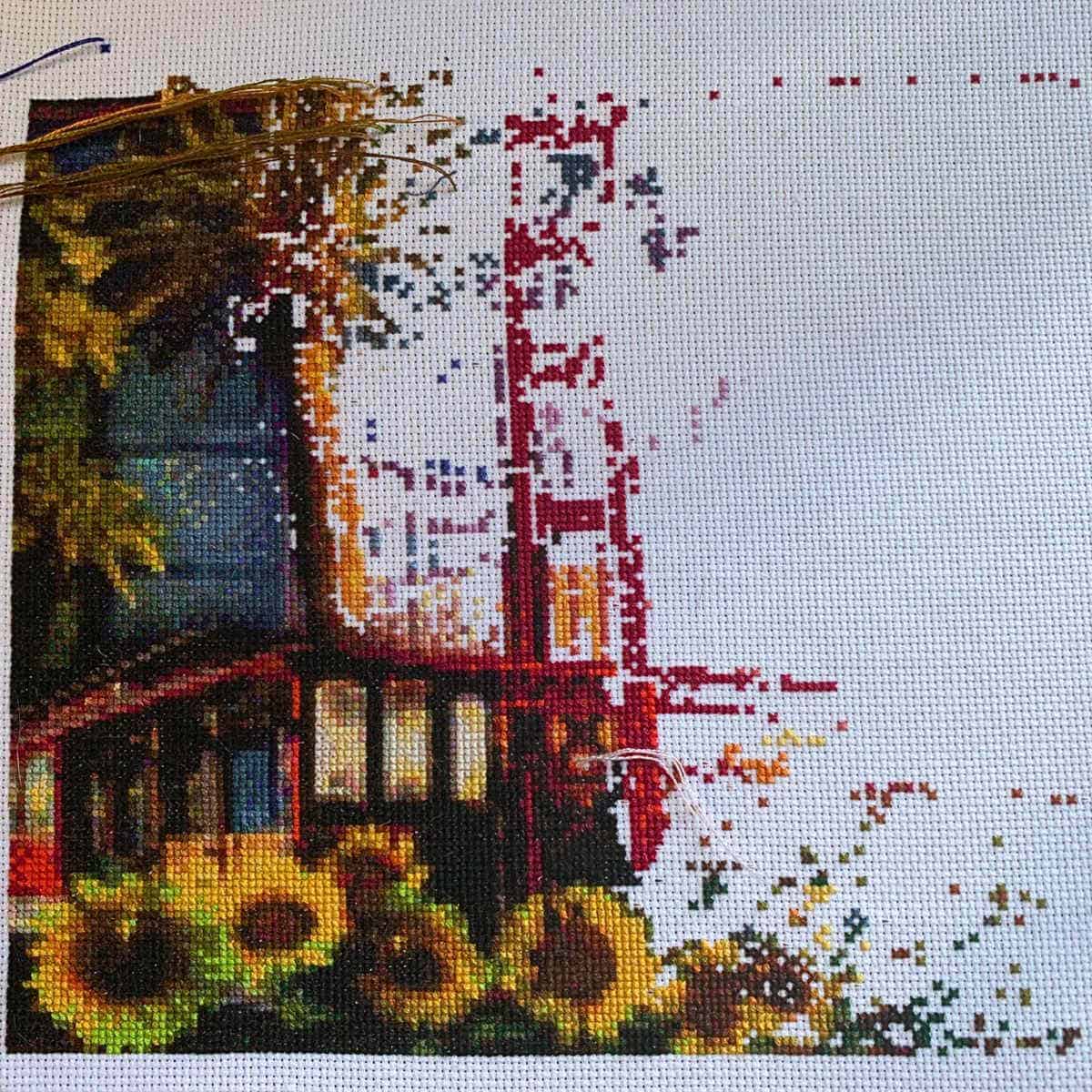
What is parking in cross stitch?
Parking is the method by which you "park" or leave a floss unworked in the hole or space where the next stitch of that color goes.
The image below shows a yellow box around the "parked" threads.
Take a look at my Cross Stitch Parking Method Step-by-step tutorial article.
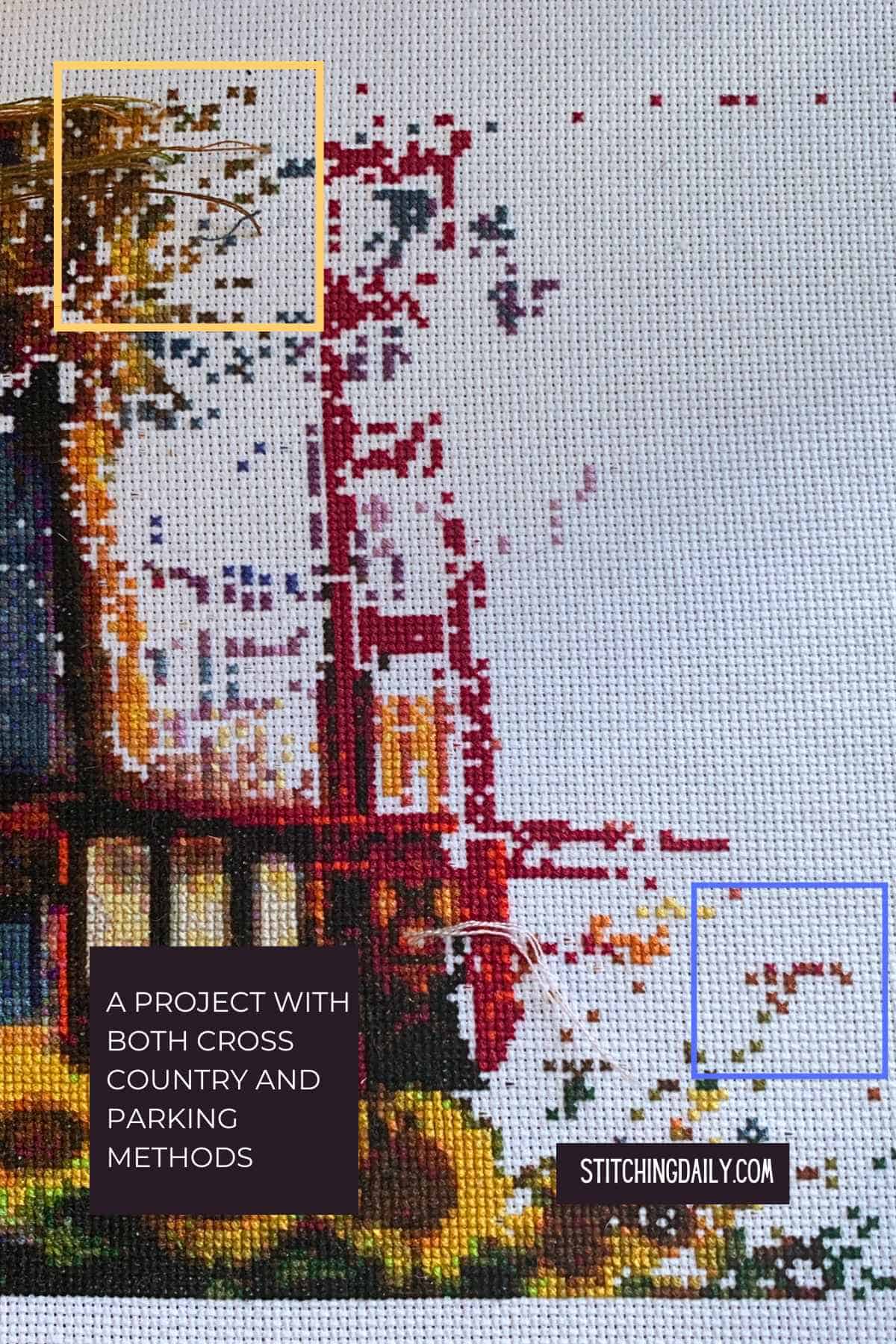
What is cross country stitching?
Cross country in cross stitching is where you stitch one color across the entire project or a page or section. You are willing to travel across a larger distance on your fabric with the thread to get to the next stitch.
The image above shows a blue box around the "cross country" stitching. Where I've skipped empty squares to stitch the next instance of the color I was working with.
What is the most efficient way to cross stitch?
The most efficient way to cross stitch is the method that works best for you for the project you're currently working on.
I know, you came here hoping for one definite answer. Unfortunately, there isn't one.
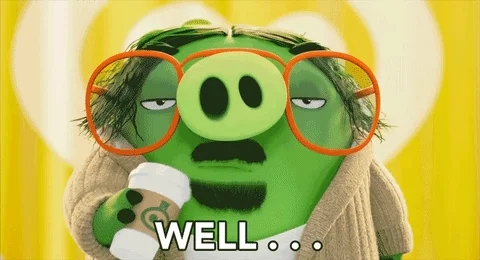
In fact, I've tried different methods and depending on the project and the mood I'm in, I've found my efficiency or the speed at which I can stitch varies.
The best way to answer this question is for you to do your own test on your own project.
How do you mark your progress on your stitch pattern?
Marking your progress when stitching cross country
If you are using a paper pattern, many stitchers will just use a pencil, pen or highlighter and color over the pattern boxes as they complete the stitches.
HINT: It is helpful to mark it in a way so you can still see the pattern symbols. This helps so you can catch any mistakes where you stitched with Color A when it should've been Color B.
HINT 2: If stitching from a paper pattern, consider making a "working copy" first. This is a copy you will mark on while still keeping the original pattern unmarked. This is helpful in case you lose your pattern or it gets ruined.
If you are using an app such as Pattern Keeper on your Amazon Fire Tablet, Markup XP or a pdf reader, you would just mark the stitch as completed.
Marking your progress when cross stitch parking
If you're parking, you will want to add a second color to your marking.
I prefer to use a bright color and that's the one I use to mark my parked stitches. I will then use a slightly darker color to mark my completed stitches. For example, I might use a neon yellow highlighter to mark where I park my stitches in my project, and then as I complete the stitches, I color them with a blue highlighter.
If you are using an app such as Pattern Keeper on your Amazon Fire Tablet, Markup XP, both have a setting to mark parked stitches. You can choose the color and the corner of the square to mark. Then you have a second color to to mark the stitches you have completed.
Some things to consider when choosing a stitching method
There are a few things to consider when deciding which method to choose.
How far do I like to carry my thread?
Personally, I don't like my threads going farther than 2 inches. I stitch in hand so my fabric isn't held taut. So if I have a thread that's let's say, for example, 5 inches from Stitch A to Stitch B - I could end up with tension issues if I don't have a way to tack down the stitch. Or I'll have 5 inches of thread in the back of my fabric just hanging out all loosy goosy.
If you like to carry it a long distance = try cross country.
If you don't like to carry it a long distance = try parking.
Does having loose threads dangling in front of my work bother me?
Having loose threads does not bother me. I also use different things to help keep the threads manageable, but either way, I don't have any problem with it.
If loose threads bother you = try cross country.
If you don't mind loose threads = try parking.
Does threading needles bother me?
To be fair, there is an option where people park and leave needles on, so in that case, this would not be a factor.
But most people park and remove the needles. In that case, you would need to rethread it each time you go to work that color. So in the end, you would be threading the needle more times than if you finished it off.
If you don't like threading needles = try cross country.
If you don't mind threading needles = try parking.
Do I feel confident when I count stitches?
This is the number 1 reason why I do parking on most of my cross stitch projects.
If you feel confident that you're counting is correct and you can correctly count the number of stitches you need to skip and where to place the next stitch, then cross country might be your jam.
If you feel confident counting stitches = try cross country.
If you don't feel confident counting stitches = try parking.
How to Test Which Stitching Method is Best
Decide on a length of time, 5 minutes is usually what I do, and then stitch as much as you can using one method. Then set another timer and stitch a different method.
Personally, I am more efficient when I park in a 20x10 blocks. Unfortunately, I'm really bad at counting and find that I spend more time counting and counting again when I try to do cross country stitching. It's easier for me to just park and know that if I have the thread in the wrong hole, I can easily go back and change it in the future.
Are some cross stitch patterns easier to stitch in one method or the other?
I have found that patterns with blocks of color or areas where you use a lot of one color are easier to stitch in cross country. When there's a large block of one color, I prefer to just stitch all of it and use up all my thread while I have it on my needle.
If there is a lot of confetti meaning a lot of different colors in one area, I prefer parking so that I reduce the number of counting mistakes I have.
Is one faster than the other?
This will be vary based on the stitcher.
For myself, I was slower when I stitched cross country because I was not confident in my counting and kept recounting.
Also, I use a needle threader and I've become pretty good at threading needles. But if that's something you struggle with, than parking might be slower for you.
There are also different variations of the methods
Parking with needles on or off
With parking, some people keep needles on their parked threads, others don't. (I'm in the DON'T keep needles camp. I stitch in hand and random hanging needles would be a nightmare.
Parking across an entire row, a block or a diagonal
I prefer to park in a 10x20 block. But I do have a project where I did one entire row across the top.
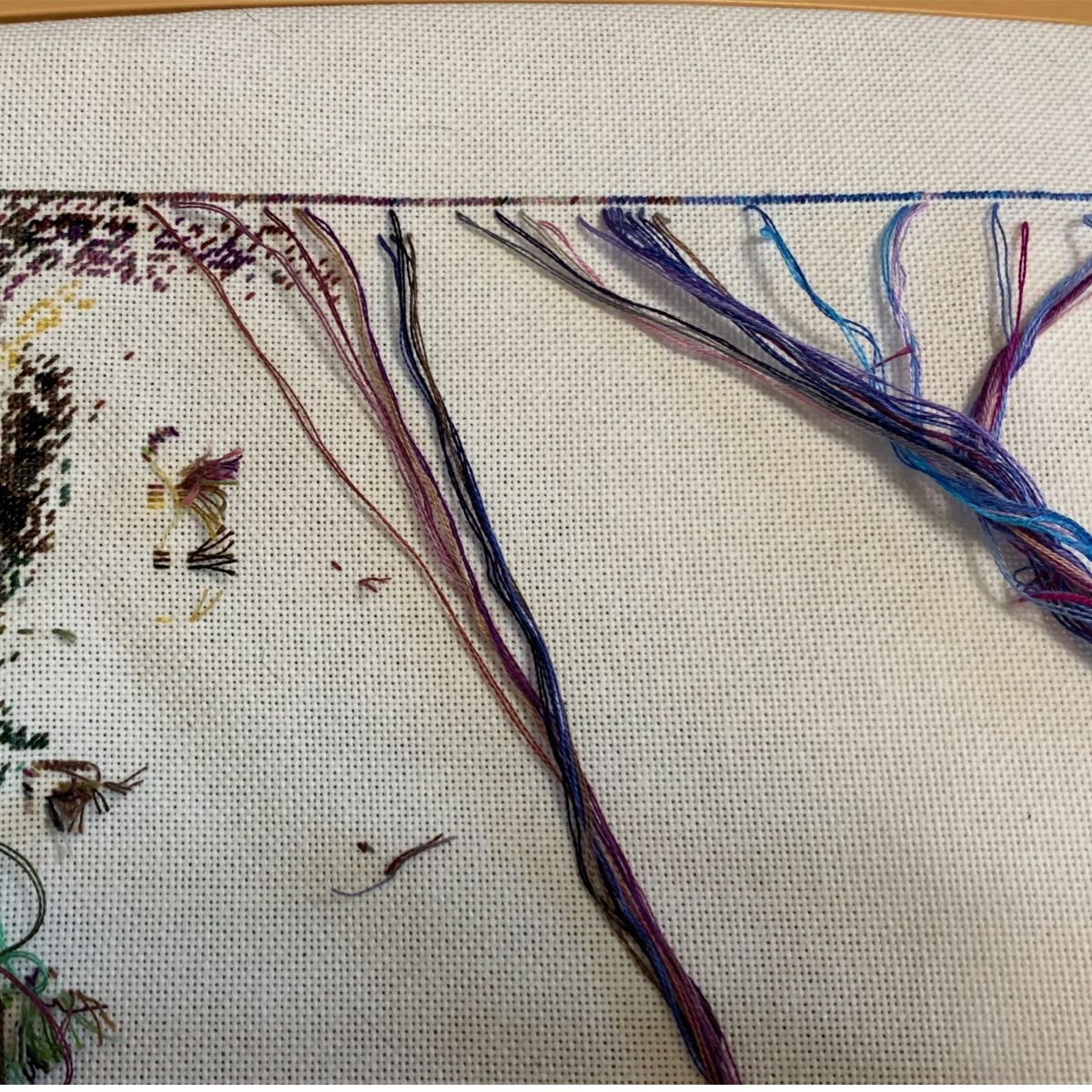
Note, this project is stitched with half stitches not full Xs
Extreme Cross Country or limited cross country
With cross country, you could go extreme cross country where you complete a whole color all the way around the pattern.
Or you could just do cross country in a small section, a motif, a page or a diagonal. You get to decide what works best for you. But if you did set a limit to cross country in a smaller section, you could see your image start to appear quickly which is one of the "advantages" of parking.
So Which Method is Better?
The best advice I can give you is to try out both methods of stitching and find what works for you.
But also realize that the experience can be different based on the pattern, fabric you're using, and whether you're stitching in hand (as I do) or using a frame.
In fact, you can also start one method and switch to another mid-project. The video below shows the process of switching from cross country to parking.
Do you stitch cross country or parking or both?
I'd love to know how you stitch and why. Leave a comment below!



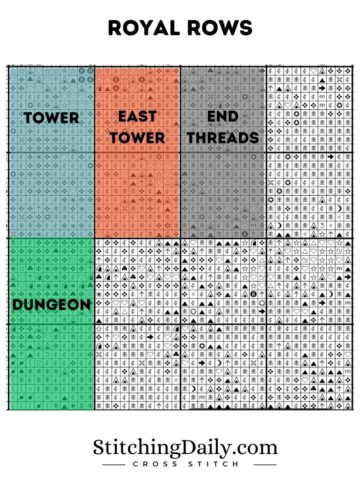
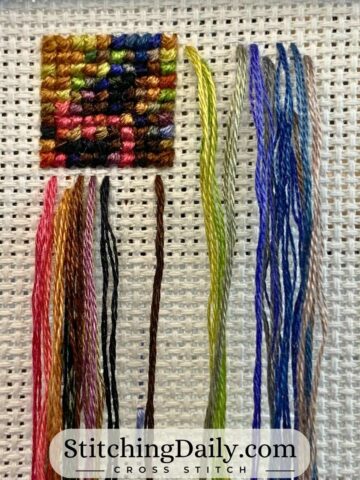
Darai Voss-Roundy
so does this method work with a project that ISN"T full coverage, or not really?
Rebecca
Hi Daria! I haven't tried parking on a project that wasn't full coverage, but it might work as long as the threads running behind the fabric isn't visible through the fabric.
For my projects that aren't full coverage, I do carry my fabric along the back if I'm it's a short distance, but if the fabric is more of an open weave or it'll be far, I will end my thread and start again in the new space.